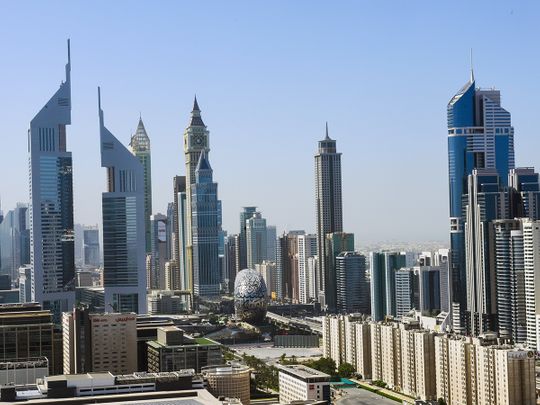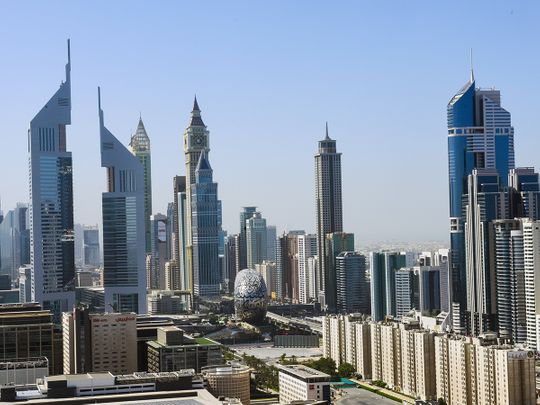Air quality in UAE improved in recent years, AUS-led research finds

Image Credit: Virendra Saklani/Gulf News
Sharjah: A joint study led by American University of Sharjah (AUS) has found potential improvement in the UAE air quality in recent years, likely because of regulations and cloud seeding.
Looking at the effect of meteorological parameters on air quality, the two-year study analysed a number of factors at two sites near Abu Dhabi and Dubai international airports. Major results showed a decline in smaller particulate matter in the UAE in 2017 in comparison to 2016. “This indicates major improvements to air quality in recent years because of government regulations, and recent cloud seeding and rain enhancement projects,” said Dr Yehya Al Sayed, Professor in Biology, Chemistry and Environmental Sciences at AUS and co-lead on the research.
Living with dust
In a desert environment, dust can have a significant impact. “This research assesses environmental quality in the region, where exposure to dust is part of daily life. There is shortage in the data available about dust patterns and composition in the Gulf region. The long-term exposure to dust storms is expected to have an impact on our daily lives and operations, which is why we need to monitor their periodic patterns and characteristics,” said Dr Al Sayed. “For example, dust storms result in reduced visibility that limits aviation and may cause mechanical problems for cars and aeroplane engines. Further, dust particulates have the potential to impact public health since they can easily enter the respiratory system and affect the heart and lungs.”
Environmental data for regulations
The study provides new data about the seasonal and temporal meteorological climate, and the information can help regulators adopt measures that can potentially alleviate the impact of dust and sandstorms on aviation and public health, according to the research.
“Detailed assessment of dust contamination and metal concentration can potentially solve or eliminate possible mechanical problems in automobiles and aeroplane engines that are associated with dust. Dust storms may include desert sand, sea salt aerosol, soil erosion dust and fossil fuel combustion products. While most of the metals found are part of the sand composition, some of the heavy metals identified in low concentrations are most likely related to major industrial, heavy machinery and construction activities within the vicinity of the stations. The data can assist environmental agencies in their regulatory roles,” said Dr Sofian Kanan, Professor in Biology, Chemistry and Environmental Sciences at AUS and co-lead on the research.
What was measured
The researchers installed online monitoring stations and dust collectors at each of the two research sites. The collected dust particulates were analysed, and the composition of the dust-borne heavy metals concentrations were measured at the AUS laboratories. The study also looked at meteorological parameters, including wind speed and direction; air temperature; air pressure; air humidity; precipitation; haze and contents of the air. The findings of the study have been published in the prestigious ‘Environmental Pollution’ journal.
Next steps
Moving forward, the study recommends continuous monitoring of meteorological parameters in the Gulf region to predict potential impact of future weather conditions on air-quality, aviation, airport management and public health. “Due to ongoing urbanisation in the region, it is essential to collect additional data from various locations for a longer period of time”, said Dr Al Sayed.
The research work was sponsored by General Electric Aviation. In addition to the co-leads, the research team also includes chemistry graduate Taraneh Taghaddossi, and Ahmad Farhat from the Dioscuri Centre in Topological Data Analysis in the Mathematical Institute at the Polish Academy of Sciences, Poland.

